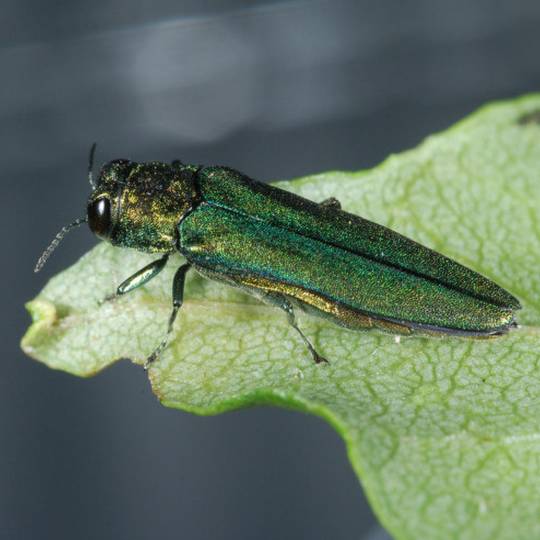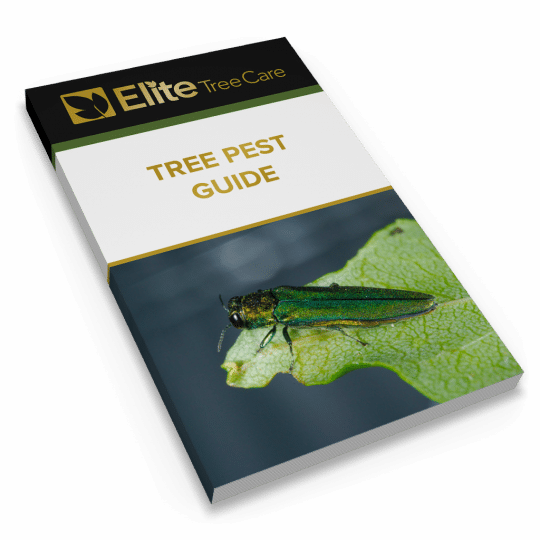Save Your Ash Trees: The Emerald Ash Borer
Posted
July 21, 2016

Read on to learn about why emerald ash borers are an invasive pest, how to spot an infestation in your trees, and how to prevent serious damage.
The Danger of Invasive Pests
One of the most rewarding parts of a vacation to a faraway place can be bringing home a taste of your trip for family or friends to enjoy. Edible food souvenirs make wonderful, thoughtful gifts. As long as that food doesn’t have a noxious invasive organism riding on it, that is. Certain foods, including fresh produce, seeds, and other natural products, are banned by the U.S. government, and for good reason. Non-native species of bug or plant can wreak havoc on local environments and cost the country billions of dollars. In its new environment, the organism may have no natural enemies and can reproduce rapidly.
The emerald ash borer is one such invasive pest that continues to plague homeowners, communities and local economies.
What Makes the Emerald Ash Borer an Invasive Pest?
Emerald ash borers are native to northeast Asia, but they aren’t considered a serious nuisance there. In the United States, they’re a different story. Emerald ash borers were first introduced to this country in the late 1990s, most likely by hitching a ride in the wood of shipping crates from China. The beetle was first detected near Detroit, Michigan in 2002 and it has since spread to 27 states, killing tens of millions of trees. The pest’s victim, ash trees, represent up to 70 percent of all urban trees, so you can imagine how devastating this beetle’s impact can be on any given tree-lined city street.
About the Emerald Ash Borer
Adult beetles are a shiny, metallic green and about ½ inch long. Once introduced into an area, the adult beetles lay eggs in ash trees. The larvae burrow into the tree and literally strangle it by eating the tree’s vascular system, the primary circulatory system of the tree. An infested tree is usually dead within four years. If the tree is not removed at this point, it can become a public safety hazard.
Emerald ash borers are widely considered one of the most destructive forest pests ever in North America.
The Emerald Ash Borer’s Victim: Ash Tree
Emerald ash borers feed exclusively on ash trees. Not sure if you have ash trees? There are several different species of ash, but they have common characteristics. Ash leaves are probably the easiest way to identify if a tree is an ash. These leaves will have 5 to 11 smaller leaflets attached that grow directly across from each other and are either smooth or have very fine “teeth.” Besides the leaves, older ash trees have distinctive diamond-shaped bark. Younger trees have smooth bark.
Do You Have an Emerald Ash Borer Infestation?
The symptoms an ash tree manifests when it is harboring an emerald ash borer population are similar to those caused by other pests and diseases. For example, the crown dieback caused by these beetles — in which the top and peripheral parts of the tree’s foliage are destroyed — can also be the result of drought stress or soil compaction. It’s a good idea to look for a combination of at least two of these signs before confirming an infestation with emerald ash borers.
Five Signs That You Have an Emerald Ash Borer Pest Problem
1. Canopy dieback, starting at the top of an ash tree and progressing downward,
2. S-shaped feeding galleries under dead or splitting bark,
3. D-shaped exit holes on the tree (other pests leave holes but a D-shaped hole is an EAB trademark)
4. water sprouts (epicormic sprouting) along the trunk and main branches, in which the diseased tree will try to grow new branches and leaves wherever it still can. New growth may appear at the base of the tree and on the trunk, often just below where the larvae are feeding.
5. increased woodpecker activity or damage on the bark of ash tree, due to heavy amounts of larvae inside the tree for the birds to snack on, and
Tips on Controlling an Emerald Ash Borer Infestation
Research has shown that a variety of chemical and microbial insecticides can protect trees from an EAB attack. Again, these insecticides are protective and best applied to healthy trees to prevent the beetles from taking up residence there. Insecticides can also be effective on infected trees, depending on the scope of infestation. Many of these insecticides are available to homeowners, but some of them need to be applied by a certified and licensed professional. A professional has access to more insecticide options and can also better assess the health of the tree and the most appropriate path forward, given the size and location of the tree and the extent of damage.
Ask the Experts about Emerald Ash Borers and Other Invasive Pests
If you have any questions or want help protecting your property from an emerald ash borer attack, contact Elite Tree Service at 610-935-2279.

Download Your FREE Tree Pest Guide
Use our guide to identify some of the most common tree pests and how to protect your trees from their damage.